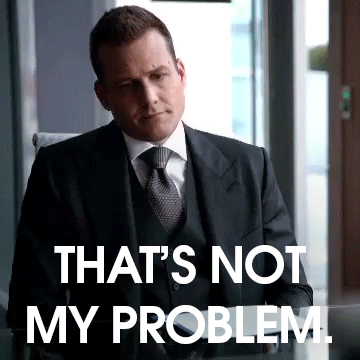Originally published on Medium. Please update your links.
2016 is shaping up to be a tough year for rapists and other abusers. You might not think so, what with the recent acquittal of Canadian radio host Jian Ghomeshi and the humiliation of his victims on the witness stand — it might seem it’s as easy as it ever was to get away with abuse, harassment and sexual violence. But for an abuser, there’s a dark undercurrent to all this. People are angry. People are talking about consent, people are saying that “only yes means yes,” and #IBelieveSurvivors and #IBelieveWomen are trending. Despite abusers’ best efforts to silence and marginalize their victims, more and more people are coming forward, willing to tell their stories and even name the people who harmed them. Not even a famous radio host is safe.
But never fear. Entitlement and misogyny are still deeply rooted in our culture and — as we saw this week — built into the very foundations of our justice system. And with a little simple strategy, you too can help keep the patriarchy strong and make sure rape culture never dies. At the very least, you can avoid ever having to think too hard about it, have any uncomfortable conversations, or consider the possibility that someone you like might be a rapist or abuser. (Because as we all know, rapists don’t have any friends. That’s how you know they’re rapists. That and the black rape hats.)
As a start, memorize these ten key arguments. Pull them out in any discussion about rape or abuse and watch how quickly the discussion derails. To see these arguments in action, do a Google search for “Bill Cosby rape” and then read the comments section of any news report you find.
1. “I don’t want to take sides.”
This is always the best starter argument. It’s great, because it excuses you from having to really think about an accusation at all. I mean, it’s super uncomfortable to think about the possibility that someone you like, maybe someone who throws great parties, or whom you’re attracted to, might have committed sexual violence or abuse. So why do it?
The really awesome thing about this particular one is that it actually lets you take the perpetrator’s side while pretending to be objective and neutral. There’s nothing that says “I don’t believe” you like “I don’t want to take sides” — except you know, you don’t have to actually say you don’t believe anyone. It’s not trendy to not believe survivors, of course, so don’t give them anything they can really complain about. The survivor will hear what you’re not saying anyway, of course, and will never trust you again — but who cares about that? Survivors are so inconveniently emotional, with all their messy trauma and stuff — and you can use that in your favour. Play the rational, rise-above-it-all card, and you can keep an abuser as your friend and have everyone else follow your lead — ensuring that your community remains safe for the abuser. Which is what you want, of course.
This one will often shut things down right off the bat. But if it doesn’t work, you might need to pull out some more advanced arguments. Like…
2. “Why didn’t they go to the police?”
Everyone knows that our legal system is 100% infallible, police always take assault and abuse seriously, survivors of sexual assault are always treated with the utmost kindness and respect by everyone they encounter in the system, and rapists are always convicted 100% of the time. Also, everyone knows that all forms of intimate violence are completely and accurately covered by our existing laws, and that factors like alcohol or involvement in consensual BDSM activity play no role whatsoever in how a survivor is treated in the system or whether the perpetrator will ever face consequences. Therefore, it’s obvious that the litmus test one should use for whether an assault actually happened is whether the survivor reported it and/or whether it was successfully prosecuted.
Never mind that successful prosecutions of rape are thin on the ground to begin with, and successful prosecutions of rape in any kind of sexual or relationship subcommunity are as rare as snowball fights in the Bahamas. If you’re a rapist looking for 100% impunity to commit whatever sexual assaults you like, the BDSM community is a good place for you; to my knowledge, there has never been a successful rape prosecution in North America in which the victim and perpetrator were both involved in BDSM. (One successful rape prosecution in the US in 1996 was overturned on appeal.)
With odds like these, if you insist on taking a “cops or it didn’t happen” (or better, “conviction or it didn’t happen”) approach, you can ensure that you never have to take sexual violence seriously.
3. “Innocent until proven guilty.”
Liberal democracies have put in place a very high standard for allowing the state to take away the life or freedom of one of its citizens (unless you’re a person of colour living in the United States, but that’s another subject). That standard gives people protections, in theory at least, like “innocent until proven guilty” and “proof beyond a reasonable doubt.” This is ostensibly to prevent abuses of state power, but there’s no reason you shouldn’t apply these standards to every one of your interpersonal relationships, not to mention how you organize your communities. After all, not inviting someone to a party, or not allowing them to speak at your conference, or even just telling a survivor that you believe them is every bit as serious as locking someone up in prison. So of course you would never want to do any of those things without the same standard of proof.
Look, I know what they say about Bill Cosby, but it really doesn’t matter how many people have accused someone of assault or abuse. If there isn’t iron-clad forensic evidence available in every one of the cases, you have to assume that the accusers are all lying until they can produce some kind of proof that they’re telling the truth. After all, the system assumes that the accused is innocent, but it makes no such assumptions about the accuser. Why should you?

4. “They’re both grownups; they can work it out for themselves.”
If you want to create a community that is safe for abusers and unsafe for survivors, use this one. With it, you can easily make sure no one ever speaks up about what happened to them. You’ll make it abundantly clear that if someone is violated, you won’t have their back. It also makes sure that they can’t access community spaces without running into the person who hurt them — or without first going through an “accountability process” that gives their abuser another chance to discredit and gaslight them. Conveniently, this ensures that anyone who’s been harmed will just quietly slink away when it’s all over — making sure that you don’t ever have to deal with their inconvenient accusations. It’ll just be you, the abuser, and the people who know how to play nice (i.e. keep quiet). This means you won’t have drama, and drama is way worse than having an abuser or rapist in your social circle.
5. “There’s two sides to every story.”/ “No one really knows what happened except the two of them.”
This is a multi-pronged strategy that combines several approaches (disbelieving victims, falsely appearing to be neutral, and supporting the perpetrator while appearing to rise above it all) at once.
When we’re confronted with any other kind of crime report, we don’t usually play the “two sides to every story” card. If Bob says Jake stole his car and Jake says “nuh-uh, Bob totally gave it to me,” it’s unlikely in the extreme that you’ll hear anyone say “There are two sides to every story.” (Maybe Jake took Bob out to dinner? I mean, hey, man, if you pay for a guy’s dinner, he totally owes you the use of his cool ’67 Stingray, amirite?) But with this strategy, you can totally deflect rape accusations. Maybe it…never really happened at all! Maybe they’re making it up! Because, you know, there are two sides to every story.
And if fifty women all come forward and accuse Bill Cosby of rape? Well, you know, there are fifty-one sides to every story, right? But we all know that only one of them really matters.
6. “But he’s a good guy!” (modify as needed for the gender in question)
Look we all know that rape (real rape; see #11) is a heinous crime. Of course this means that rapists are monsters, and obviously so. They have shifty eyes, wear hoodies, hang out in dark alleys and are probably Mexican. They are never star football players, or A students, or community leaders, or our lovers. They don’t seek out positions of power and influence in order to cultivate allies and escape accountability. They are never, ever charismatic or persuasive, and they certainly never identify as feminists. Obviously, they never wear different faces with different people, because that would mean they might have friends who trust them, and who will vouch for and defend them if an accusation ever does come to light. Since that never happens, all you really need to rely on is your own personal experience with a person. If they seem trustworthy to you, they are. If they never hurt you or anyone you know, clearly they never hurt anyone. Anyone who says differently must be lying.
7. “But people make fake accusations all the time!”
The real rate of false rape accusations is hard to determine, but in most credible studies, it generally hovers somewhere around 8 percent, the same as (or lower than) other types of crimes. And people who report sexual violence — especially the ones who try to pursue it through the courts — are usually subjected to humiliation and shaming. They usually lose friends, the people close to them often don’t believe them, they may have their careers damaged and may lose support in the community. But obviously they’re just doing it for all the attention. I mean, who wouldn’t want to be doxxed and get death threats on Twitter? You can’t treat every accusation as credible just because 92% of them are true — even when multiple people are accusing the same person.
And just remember, you’re not really trying to find out the truth here. This is about preserving rape culture, which means you need to master the three Ds: discredit, deflect, derail. This argument does all three.
8. “If it wasn’t consensual, then what was she doing with him with him at the beach/in a motel room/at a club/whatever?”
These days, it’s considered gauche to play the “She must have wanted it, look at the dress she was wearing!” card. But fear not, the “She must have wanted it, why else would she be in that place with him?” card works just as well. Going to someone’s house is implied consent for sex, right? You’d never be in physical proximity to someone else unless you wanted to do the horizontal mambo, right? Even better if they meet at a club; everyone who goes to a club is looking for sex, and is open to getting it from anyone else who goes to the same club, right?
Related to this, always remember to ask if the accuser was drunk. If they were, then you’ve got a perfect out for having to take their story seriously, since a drunk person’s body is fair game for anyone who wants access to it — anyone who gets drunk knows that, so no one ever gets drunk unless they want to have sex with anyone who wants them. And since studies show that about 70% of rapists rely on intoxication, and not force, as their strategy for assault, adopting this approach means you can make over two-thirds of assaults magically disappear.
9. “It must not have been rape. She didn’t act like I think a victim should act after it happened.” (See also: “Why didn’t she leave if it was so bad?”)
Rape is a traumatic violation of bodily autonomy. Rape survivors often engage in a number of non-intuitive behaviours to deal with the violation, that may include minimization, deflection, denial and other strategies. This means rape survivors might not act like people who have experienced other forms of criminal assault, such as being mugged. And it’s hard for folks who have not experienced rape to predict how they would behave if they were assaulted.
This means rape survivors won’t always act like many people think they “should” act. And when assault survivors don’t follow the script we think they should, it becomes easy for us to tell ourselves that they weren’t really assaulted, not really. Focusing on how a person behaved after they were assaulted or abused is an excellent way to not have to think about whether it really happened. Look how well it worked out for Ghomeshi.
10. “Okay, maybe it happened, but I can’t do anything about it. It‘s not my problem’.”
This is a super-advanced tactic that is best held in reserve until you’ve exhausted all the other arguments above. Believing you are powerless to do anything to counteract rape culture absolves you from any responsibility to do so, as well as from any complicity in perpetuating it.
I mean, when you get down to brass tacks, if you’re not the one who was assaulted, and you’re not the rapist, then it really has nothing to do with you, right? It’s not as though you actually have any power to, say, create safer spaces for survivors by not inviting a known abuser to events. It’s not as if, if you run a conference or group, you’re giving a tacit endorsement to the people you give a platform to — as well as giving them social capital they can use to make it harder for victims to come forward. It’s not as if, in continuing to remain on friendly terms with a missing stair, you might be sending a message that you don’t actually believe survivors or feel that their stories are important. It’s not as if, by minimizing sexual assault and looking the other way, you are teaching abusers that there will be no consequences for their actions.
No, you’re just minding your own business. If everyone else would just mind theirs, we wouldn’t have to think about this yucky rape culture problem at all.

(Bonus) 11. “But it wasn’t RAPE-rape!”
There are lots of ways to violate consent. Just like there are lots of ways to abuse people that don’t involve raising a hand against them. It can get complicated, and the more you look around, the more common it seems to be — but you don’t need to worry about any of that if you insist that the only kind of rape that’s actually real involves a cis man inserting his penis into a cis woman’s vagina (or maybe, if you really want to be fussy, her anus). Anything else doesn’t really deserve the seriousness of the name “rape,” you know? Just like there’s no real abuse that doesn’t lead to someone going to the hospital. Of course, real rape also involves the victim being beaten and bloody — if there are no bruises, how did you know she didn’t really want it? (And even if she does have bruises, maybe she still wanted it — cf. Jian Ghomeshi.) And despite the popularity of the idea of “date rape,” there are plenty of people who still think that the only kind of rape that’s really traumatizing is stranger rape, ideally at knifepoint. Just ask Richard Dawkins.
And remember, a sex worker can’t be raped — that’s just theft of services.
If you can successfully master just a couple of these arguments, you can make sure that no matter how often we challenge rape culture, it’ll never be seriously threatened. Learn them all, and you can turn your community into an ironclad haven for rapists and abusers. Well done.
On the other hand, if you don’t actually want to support rape culture — if you want to help build a society where only yes means yes, where consent matters and abuse and assault are taken seriously — then you might want to consider banning these sentences from your vocabulary.
The choice is yours.



